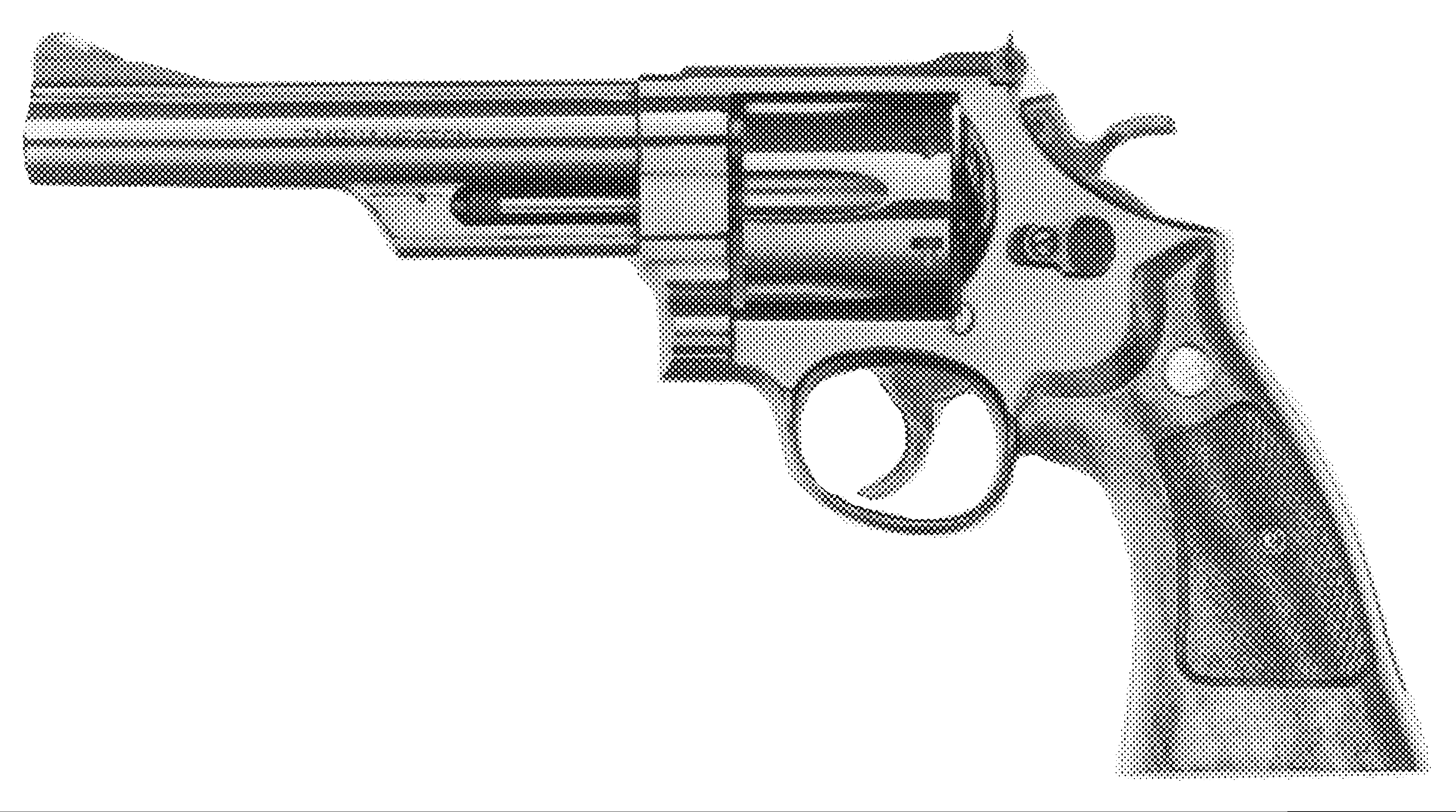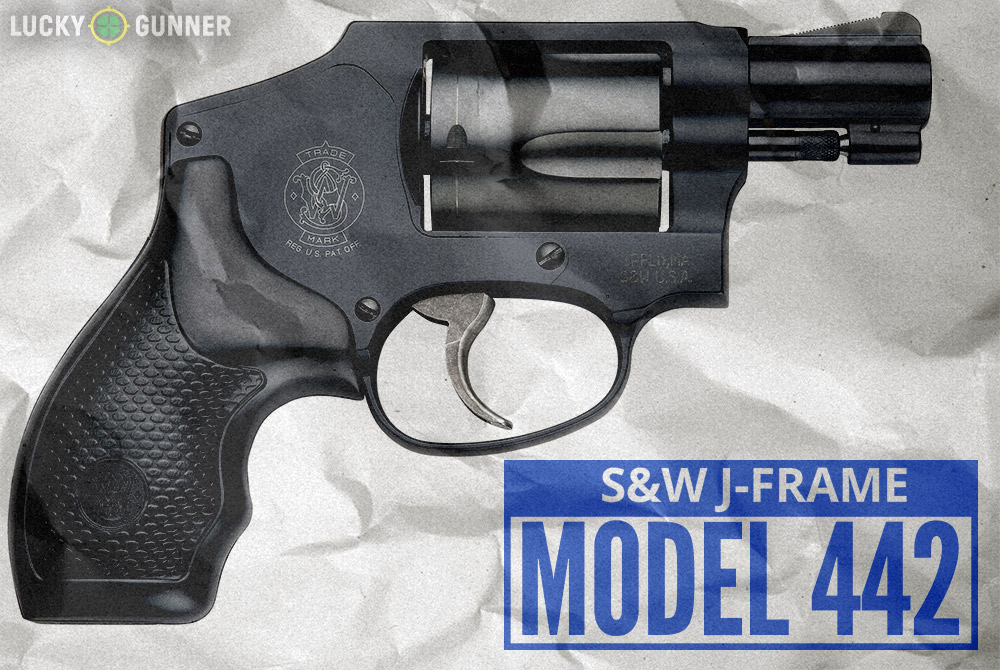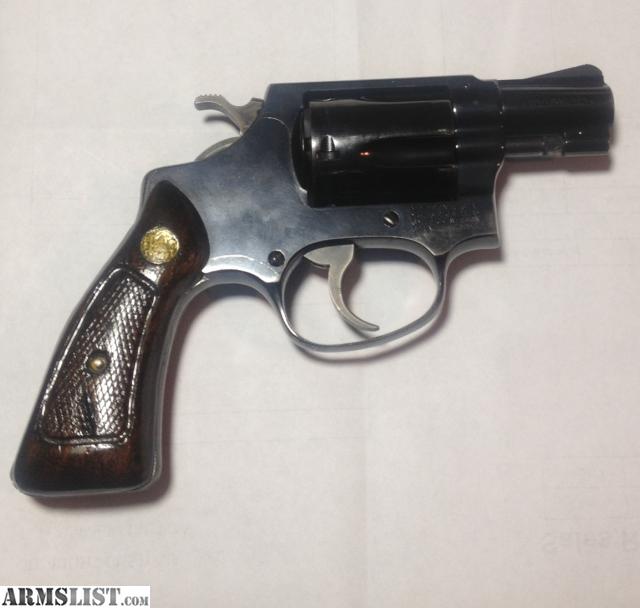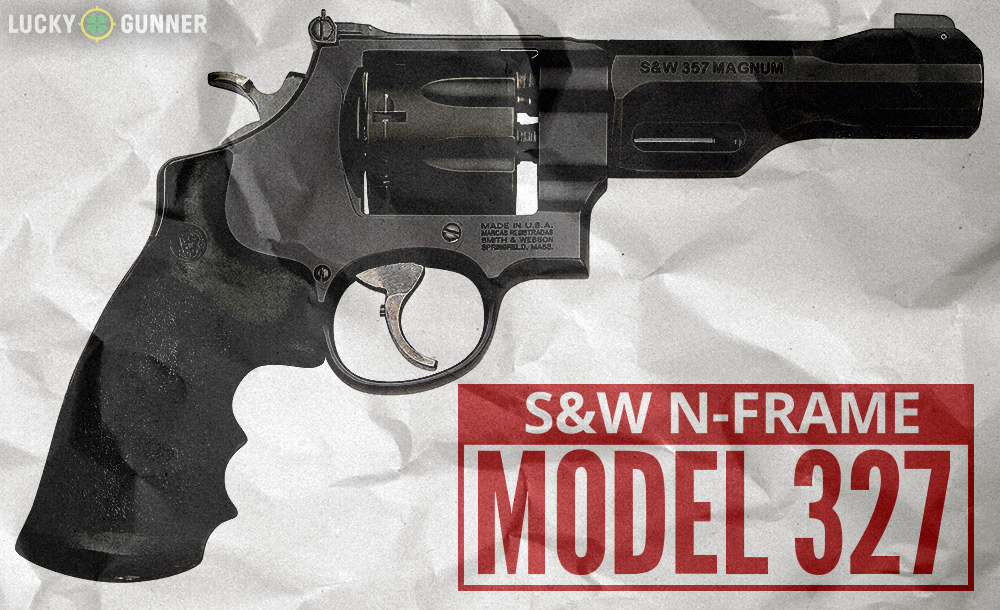I recently acquired a Smith & Wesson law enforcement and military 38 caliber revolver. The serial number is 134913 any information would be greatly appreciated. SN 134913 on a 6 shot 38 M&P would make it a Model of 1905 2nd Change. Serial numbers ran from 73521 in 1906 to 146899 in 1909. The Smith & Wesson Model 629 Stealth Hunter has a 7 + 1 ⁄ 2 inches (190 mm) ported barrel with a full-length under lug for increased stability and recoil reduction.The barrel-cylinder gap is 0.006 inches (0.15 mm), with a ball-detent lockup between the frame and cylinder crane that provides increased strength. The entire revolver is made of a. Family owned by the Wesson Family from 1874–1965. Smith & Wesson became a subsidiary of Bangor-Punta from 1965–1983. Between 1983–1987, Smith & Wesson was owned by the Lear Siegler Co.44 Frame Model Number Three.38-44 N-frame.38 Special Revolvers. The N refers to the frame size. The stainless steel version of the Model 29 is the Model 629 which came out in 1980. I assume the hammer and trigger on yours are case-hardened and the ejector is blued. If so, you have a nickel revolver from the factory. There should be a “N” on the cyl. The Smith & Wesson Model 57 is a large frame, double-action revolver with a six round cylinder, chambered for the.41 Magnum cartridge, and designed and manufactured by the Smith & Wesson firearms company.The gun was designed as a weapon for law enforcement agencies. However, due to size and recoil it found more favor with civilian target shooters and hunters.
Dating a Smith & Wesson Revolver: This list is merely a general guide and not meant to be exact. There is some dispute regarding the dates on some serial numbers. Your gun may actually be a year off from what is listed. The precise shipping date as 'lettered' can be several years off depending on model. M&P SHIELD® EZ® Pistol Important Safety Recall Notice for Pistols Manufactured Between March 1st, 2020 & October 31st, 2020 M&P15-22 Consumer Safety Alert M&P®380 SHIELD™ EZ™ Manual Thumb Safety Consumer Advisory.
Smith and Wesson No. 2 Army Revolver |
Early Cartridge S&W Model No. 2 Army Revolver in .32 Rimfire. There were a little more than 77,000 of these produced from 1861-1873. Many of these No. 2 Army Revolvers ended up in the hands of Union officers during the Civil War. Their early copper cartridges were waterproof and ideal for a soldier's life which was largely spent in the elements. Probably the most famous owner of this Model was Wild Bill Hickok who purportedly had one the day he was killed playing poker in 1876. Those with serial numbers under 35,731 were produced during the Civil War. This one is in the 33,000 range which dates it to late Civil War production. Standard 6' octagonal barrel, blued finish, with rosewood grips. A friend of mine found this in the Saint Louis area and its quite likely it spent most of its life there. Overall Condition grades to NRA Antique Fine with 65% thinning original blue on the frame with the balance turned to a smooth brown patina. The cylinder has turned completely brown but the barrel still shows about 40% original 'streaky' blue with the rest turning to brown. Strong barrel address on the top rib and nice patent dates rolled around the circumference of the cylinder. The tip-up barrel latches fairly tight to the frame with just a hint of play..not bad at all. Everything cycles mechanically. The rosewood grips are solid with 95% original dark piano varnish intact. One small chip at bottom of right grip. Grips are numbered to the serial number on the bottomstrap of the frame. Frame, cylinder, and barrel have matching assembly letter 'O'. Complete and 100% original including cartridge ejector. Good solid example of a Civil War era S&W No. 2. Item# 2021 $1,095 |
I know you’ve been on the edge of your seat hoping for Part 2 of The Quest for the Ideal Carry Revolver. Unfortunately, thanks to nasty winter weather and the past week’s wild ammo market, I haven’t been to the range much lately. So until I get more trigger time with the revolvers I’m trying out, enjoy my best attempt at deciphering Smith & Wesson’s revolver catalog.
We got some good feedback on our reference guide to 1st-3rd Gen S&W Semi-Autos, so for our Wheel Gun Wednesday series I thought I’d put together a similar chart for all of the S&W revolvers. And that’s exactly what I would have done except Smith & Wesson’s revolver model numbers have all been assigned by a mad genius. Sometimes there appears to be a logical numbering system at work, but it’s applied inconsistently, and varies from one product line to the next.
So instead of one big comprehensive chart for every Smith & Wesson revolver ever made, I’m offering this smaller bite-sized chunk: every post-1957 .38 Special and .357 Magnum revolver from S&W that officially entered full-scale production.
Why 1957? That’s the year when S&W switched over to assigning model numbers to each revolver rather than identifying them only by unique names (e.g., “Registered Magnum” or “Combat Masterpiece”). The nicknames still remained in many cases, but they could refer to a family or series of revolvers with similar characteristics.
In the charts below, I’ve grouped the models by frame size and then by series. Where possible, I’ve listed the defining features of each series. For each model, there’s information about its caliber, frame material, sights, finish, and ammo capacity. Here’s a handy key for how to read the chart:
Series Name: Some of these names were used in the actual S&W catalog but others are just nicknames. S&W stopped using some of these names, even when production of the model continued. For example, the “Military & Police” designation was dropped from the K-frame revolvers years ago (and recycled for their polymer semi-autos and AR rifles), but I’ve kept the designation in the chart for all revolvers that fit the original M&P criteria.
Series Features: Each series is identified by some unique features that don’t typically apply to other models of that frame size.
Caliber: For this post, all models are .38 Special or .357 Magnum. Most S&W .38 Special revolvers can handle +P ammo, but the +P designation doesn’t appear on the barrel of some older models so it’s always best to contact S&W customer service and verify that it’s safe.
Frame Material: S&W has used a variety of metals to construct their revolvers over the years but the frames all have been either steel or a lightweight aluminum alloy. Some variants of the alloy guns contain Scandium for an even lighter overall weight. The absolute lightest S&W revolver have also included a Titanium cylinder. I’ve noted the use of Sc or Ti on the chart when the only available version of a given model use those alloys. Other alloy frame guns listed on the charts may have Sc frame or Ti cylinder variants that exist in addition to the standard aluminum or steel versions.
Model Number: The model number assigned to the product without any prefixes or suffixes (with the exception of the “Plus” model L-frames).
Sights: Sights can be fixed or adjustable. The fixed sights are generally a ramp style front sight with a gutter in the top strap to form the rear sight. S&W has used a variety of adjustable rear sights over the years, but most have a removable blade insert. Front sights on models with the adjustable rear can be the traditional ramp style machined into the barrel, but newer front sights are pinned, and can be removed and replaced with aftermarket front sights.

Finish: For the sake of simplicity, I’ve only used the labels “black” or “stainless” on the chart. Black can refer to a matte black finish or a glossy blue finish. Older models with a blue finish were often also available with a shiny nickel plated finish. Stainless can refer to the polished or matte stainless steel revolvers, or alloy revolvers with a silver matte finish that mimics the stainless steel look.
Ammo Capacity: All J-frame .38 Special and .357 magnum revolvers have a five-round capacity. K-frames all have six. L-frames can hold six or seven shots depending on the model. Older N-frame designs have a six-round capacity but the newer ones hold eight.
Other Info: I’ve tried to keep the chart as complete as possible while still being readable. That said, there is still information you won’t be able to find here. The most significant omission is barrel length. Almost every model has been offered in multiple barrel lengths at some point but availability varies. The more common barrel lengths are listed in the summary for each frame size.
I also haven’t listed the variants available for each model. If a model number contains a suffix like “PD” or “Lady Smith”, it might mean that it has features that distinguish it from other models in the same series. Here’s an incomplete list of the more common variants and some other suffixes you might see on model numbers:
- PD: “Personal Defense”. Usually indicates Scandium alloy frame.
- Sc: Indicates frame with Scandium Alloy.
- Ti: Titanium Cylinder. Usually accompanied by Scandium alloy frame.
- Lady Smith: Name given to a number of variants in different calibers and frame sizes. Usually accompanied by special grips and engraving.
- Airweight: Indicates an Aluminum alloy frame.
- Airlite: Indicates a Scandium alloy frame.
- Night Guard (NG): Series introduced in 2008 with models in various calibers and frame sizes. All have a 2.5-inch barrel, alloy frame, steel cylinder, Tritium front sight, and a removable Cylinder and Slide brand fixed rear sight.
J-Frame
The J-frame S&W revolver has become so ubiquitous that the term is often used as a generic reference to almost any small frame snub nosed revolver. The most common barrel length for a J-frame is 1 ⅞” but 3-inch models are also plentiful along with some other less common sizes.
J-Frame model numbers are determined by frame material, hammer/action type, and finish. Unlike K and L frame revolvers, S&W doesn’t use a separate model number for J-frames with adjustable versus fixed sights.
A few J-frame models started out as being offered in only .38 special, but in the mid-1990s, were beefed up to handle .357 magnum. I’ve included each of these multi-caliber models as two separate entries in the chart.
How To Look Up S&w Serial Numbers

The three major J-frame model series are as follows:
- Chief’s special: Standard hammer. Most have fixed sights but a few have been offered with adjustable sights.
- Bodyguard: The original S&W Bodyguard. They include a hammer shroud with a small protrusion that allows the user to cock the hammer for single action shots.
- Centennial: This is the name generally given to all “hammerless” S&W revolvers. They aren’t literally hammerless, but the hammer is completely internal, which means these revolvers can only be fired in double action.
K-Frame
The classic S&W K-frame is one of Smith & Wesson’s most enduring designs. Picture a typical 20th century policeman’s “service revolver” and it probably looks a lot like a K-frame with a 4-inch barrel. These mid-size revolvers have also been offered with long 6-inch barrels for target models, and 3-inch, 2.5-inch, and 2-inch snub nose versions for concealment.
Model numbers are based on finish, caliber, and whether the gun has fixed or adjustable sights.
There have been three major series of .38 Special and .357 magnum K-frames along with a couple of unique models:
- Military & Police: The original K-frame. They have fixed sights and no underlug or shroud around the ejector rod. The .357 magnum versions were added to the catalog along with the Combat Magnum series.
- Combat Masterpiece: Essentially identical to the M&P line, but with the addition of adjustable sights. The model 68 — a special run for the California Highway Patrol — also includes a shrouded ejector rod.
- Combat Magnum: These are the .357 versions of the Combat Masterpiece. The Combat Magnums have a shrouded ejector rod as standard.
- Target Masterpiece: Target guns with adjustable sites and typically offered with a 6-inch barrel, but also available with 4-inch and 8 ⅜-inch barrels. The later models added a full underlug to the barrel.
- Alloy K-frames: The only non-steel K-frame revolvers have been the 12 and 315. The Model 12 was offered for many years as a lightweight version of the model 10, but was discontinued in 1986. The 315 was offered for a very short time in 2008 as a part of the Night Guard series with a 2.5-inch barrel and upgraded sights. By some estimates, fewer than 1000 were ever produced.

L-Frame
The medium-large L-frame .357 models came along in the early 1980s as a bridge between the hefty N-frames and the smaller K-frames. Common barrel lengths are similar to the K-frames, with the 4-inch models being the most common and 6-inch, 3-inch, and 2.5-inch versions also available.

Also similar to the K-frame revolvers, the L-frame model numbers are determined by sights, finish, and frame material.

S&W has used the L-frame for a lot of its more innovative and experimental models. The 586 and 686 “plus” models were among the first 7-shot medium-frame revolvers on the market, and several lightweight alloy L-frames have been produced at various times.
- Distinguished Combat Magnum: These are the flagship models of the L-frame line. They feature a full barrel underlug, steel frame, and adjustable sights.
- Distinguished Service Magnum: Nearly identical to the Combat Magnum, only with fixed sights.
- 619 & 620: These two were introduced as a replacement for the K-frame .357 models that S&W discontinued in the early 2000s. They are very similar to the 681/686, but have a slimmer barrel profile with a shrouded ejector rod rather than a full underlug.
- 520: Not to be confused with the short-lived N-frame model 520. This was essentially an alloy framed version of the 620.
- 386: The model with no name. There have been several versions of the 386, each with its own name and features. The common attributes are an alloy frame with a black finish and adjustable sights. With the exception of the 386 PD, all have had a 7-shot cylinder.
- 242: The only “Centennial” hammerless Smith & Wesson that’s not a J-frame. Designed for concealed carry, it’s also the only L-frame chambered in .38 Special rather than .357 Magnum.
N-Frame
The S&W Model 27 N-Frame was the original platform for the .357 Magnum cartridge. The design proved to be durable, but it’s considered large and heavy for a 6-shooter by today’s standards. With modern metals, S&W has managed to cram eight rounds into the newer N-frame .357s.
Available barrel lengths for N-frame revolvers have varied widely over the years, and include 3 1/2-inch, 4-inch, 5-inch, 6-inch, and 8 3/8-inch models, among others.
- The Original Magnums: The Model 27 was the original .357 and was initially called the “Registered Magnum”. It has a deep blue finish, shrouded ejector, and adjustable sights. The budget model 28 “Highway Patrolman” has all the same features, but with a few minor changes, such as a slightly less polished finish.
- 8-Shot Magnums: Neither the alloy 327 or the steel 627 have had an official name. Both of these 8-shot N-frames have been offered with various features and barrel lengths.
- Military & Police: In 1980, the New York State Police ordered a model 27 with fixed sights. The ordered was never delivered, and a few thousand of these ended up in the general market. In 2005, S&W recycled the model number 520 for an alloy L-frame .357.
Smith And Wesson Serial Number Lookup N Frame
Work in Progress
Smith And Wesson Antique Revolvers Serial Numbers List
How To Find Smith And Wesson Model Number
I am by no means an expert on Smith & Wesson revolvers. Most of this information is just stuff I’ve picked up from window shopping for Smith & Wesson revolvers over the years. I’ve tried to verify and flesh out the info using other sources like the Standard Catalog of Smith & Wesson, but there are probably some omissions and errors in there somewhere. If you spot one, be sure to let me know. I’ll be checking on this post periodically and will update it with corrections and additions when I have the chance.